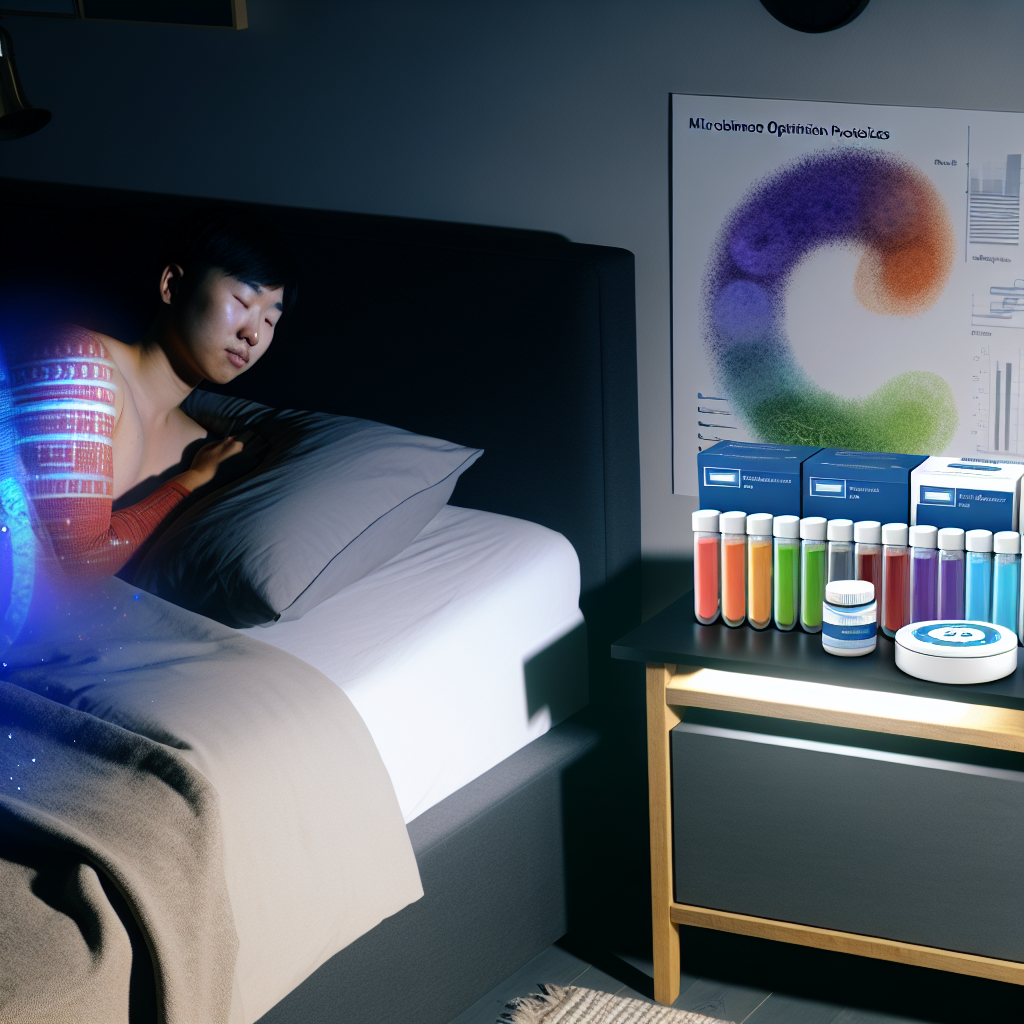# Sleep Paralysis Prevention: Neuroscience-Based Relaxation Techniques That Work
Sleep Paralysis Prevention: Neuroscience-Based Relaxation Techniques That Work
Sleep paralysis is more than just a strange nighttime phenomenon—it’s a serious disruption of healthy sleep cycles that can impact your overall well-being. But exciting advances in neuroscience offer new hope. In this guide, we explore powerful, research-backed relaxation techniques proven to help prevent and manage this condition naturally. Discover how engaging your brain and body through smart, science-driven strategies can safeguard your sleep.
Understanding Sleep Paralysis: What Happens When the Brain and Body Disconnect
Sleep paralysis is a sleep disorder that affects countless individuals across ages and backgrounds. Often described as a brief inability to move or speak while falling asleep or waking up, sleep paralysis can be a frightening and unsettling experience. While episodes are generally benign, they are frequently accompanied by hallucinations, a feeling of pressure on the chest, and an overwhelming sense of fear.
This phenomenon occurs during the rapid eye movement (REM) stage of sleep. During this phase, your brain is active and dreaming, while your body enters a state of temporary paralysis to protect you from physically acting out dreams. However, with sleep paralysis, your mind wakes up while your body remains immobilized—creating a conscious state during bodily paralysis.
Research suggests that up to 8% of people experience this phenomenon, with elevated rates among those with stress, irregular sleep, anxiety, or other sleep-related disorders. Although not harmful in most cases, the psychological toll of recurring sleep paralysis can impact daytime functioning and reduce overall sleep quality.
The Neuroscience Behind Sleep Paralysis: How Your Nervous System Impacts Sleep
Thanks to modern neuroscience, we now understand that sleep paralysis often has a neurological root. Central to this understanding is the autonomic nervous system (ANS), which governs unconscious bodily functions including heart rate, digestion, and—critically—sleep transitions.
The ANS consists of two branches: the sympathetic (fight-or-flight) and parasympathetic (rest-and-digest) nervous systems. When the sympathetic system is overactive—due to chronic stress or irregular routines—it can lead to REM cycle disturbances and increase the likelihood of disjointed sleep phases like sleep paralysis.
Researchers at Harvard Medical School and the Stanford Center for Sleep Sciences have published findings showing that regulating the ANS through specific, evidence-based relaxation techniques can help stabilize REM transitions and reduce the frequency of paralysis episodes.
Progressive Muscle Relaxation (PMR): A Simple Technique with Big Results
One of the most well-documented methods for sleep preparation is Progressive Muscle Relaxation (PMR). PMR involves tensing and relaxing muscle groups in sequence, which helps physical tension dissipate and signals the body to enter a parasympathetic state.
A 2015 study published in Sleep Disorders found a marked decline in sleep paralysis experiences among individuals who practiced PMR regularly over a three-month period. Beyond aiding muscle relaxation, this technique also reduces pre-sleep mental arousal—a key component in creating a safe passage into sleep cycles.
Try incorporating PMR into your nightly routine by lying down in bed, clenching one muscle group at a time (starting from your toes and working upward), holding for five seconds, then releasing. It takes less than 10 minutes and can make a noticeable difference.
Mindful Breathing Techniques: Calming the Brain Through the Vagus Nerve
Breathing isn’t just a vital function—it’s a powerful tool to regulate your nervous system. Controlled breathing techniques engage the vagus nerve, a key player in the parasympathetic system that helps shift the body away from stress mode and into a restful state.
One technique gaining popularity is the 4-7-8 breath. It’s as simple as it is effective: inhale for 4 seconds, hold your breath for 7 seconds, and exhale slowly for 8 seconds. Neuroscientific studies have shown this type of paced breathing lowers heart rate, reduces cortisol (the stress hormone), and facilitates smoother transitions through sleep cycles.
Practicing 4-7-8 breathing for a few minutes before bedtime can reduce arousal levels and increase your chances of uninterrupted, paralysis-free sleep.
Using Brainwave Entrainment and Meditation to Enhance REM Stability
Cutting-edge studies reveal that auditory stimulation—like listening to brainwave entrainment—can synchronize brain frequencies with favorable sleep states. Binaural beats tuned to delta (0.5–4 Hz) and theta (4–8 Hz) waves are particularly effective in preparing the brain for deep and restorative rest.
The Journal of Neurotherapy reports that individuals who listened to delta-frequency soundwaves prior to sleeping experienced improved REM stability and fewer sleep disruptions, both of which are key to preventing sleep paralysis.
Pairing these sounds with guided meditation or yoga nidra practices before bed can help lower stress, regulate brain activity, and support smoother sleep transitions.
CBT-I: Cognitive Therapy That Targets More Than Just Insomnia
Cognitive Behavioral Therapy for Insomnia (CBT-I) is a psychological approach traditionally used to treat chronic insomnia, but new research shows its effectiveness in managing sleep paralysis specifically. A 2020 clinical trial in Canada adapted CBT-I techniques for patients suffering from frequent paralysis, helping them not only sleep better but also address the anxiety often tied to their nightly episodes.
CBT-I techniques include sleep scheduling, thought reframing, and stimulus control—helping retrain the mind and body to dissociate bedtime from stress or fear.
Anyone with recurring sleep paralysis linked to psychological stress may benefit from working with a therapist certified in CBT-I or exploring self-guided CBT-I workbooks and programs.
Take Control of Sleep Paralysis with Neuroscience-Backed Strategies
Sleep paralysis can feel out of control, but the science tells us otherwise. By understanding the neurological links between stress, brain waves, and bodily relaxation, we can implement powerful daily practices that make REM disturbances far less likely.
Whether it’s incorporating progressive muscle relaxation, breathwork, meditation, or cognitive techniques, these tools recalibrate your nervous system and promote smoother transitions through the sleep cycle. The result? Restful, regenerative sleep without the fear of paralysis.
At Medoze.com, we’re passionate about helping people harness the power of neuroscience to optimize their sleep. No matter your age or lifestyle, it’s never too late to build a relaxation routine that transforms your nights.
Sweet dreams—science approved.
Concise Summary:
Sleep paralysis is a sleep disorder where the mind wakes up while the body remains immobilized, leading to distressing experiences. However, neuroscience-based techniques like progressive muscle relaxation, mindful breathing, brainwave entrainment, and cognitive-behavioral therapy can help regulate the nervous system and prevent these disruptive episodes. By understanding the underlying neurological mechanisms and implementing evidence-backed strategies, individuals can take control of their sleep and enjoy more restful, paralysis-free nights.
References:
1. American Academy of Sleep Medicine. “Sleep paralysis.” Accessed April 2024. https://sleepeducation.org/sleep-disorders/sleep-paralysis/
2. Denis, D., et al. (2015). “A systematic review of variables associated with sleep paralysis.” Sleep Medicine Reviews, 29, 73-97. https://doi.org/10.1016/j.smrv.2015.08.005
3. Ong, J. C., et al. (2008). “Mindfulness meditation and cognitive behavioral therapy for insomnia.” Sleep, 31(5), 757–765. https://academic.oup.com/sleep/article/31/5/757/2454375
4. Loew, T. H., et al. (2015). “Progressive muscle relaxation in chronic insomnia.” Sleep Disorders. https://www.ncbi.nlm.nih.gov/pmc/articles/PMC4742857/
5. Wahbeh, H., et al. (2007). “Binaural beat technology in humans.” The Journal of Alternative and Complementary Medicine, 13(1), 25–32. https://doi.org/10.1089/acm.2006.6196
6. Stanford Center for Sleep Sciences and Medicine. Accessed April 2024. https://med.stanford.edu/sleepdivision.html
7. Harvard Health Publishing. “Breath control and stress.” Accessed April 2024. https://www.health.harvard.edu/mind-and-mood/relaxation-techniques-breath-control-helps-quell-errant-stress-response

Dominic E. is a passionate filmmaker navigating the exciting intersection of art and science. By day, he delves into the complexities of the human body as a full-time medical writer, meticulously translating intricate medical concepts into accessible and engaging narratives. By night, he explores the boundless realm of cinematic storytelling, crafting narratives that evoke emotion and challenge perspectives.
Film Student and Full-time Medical Writer for ContentVendor.com




